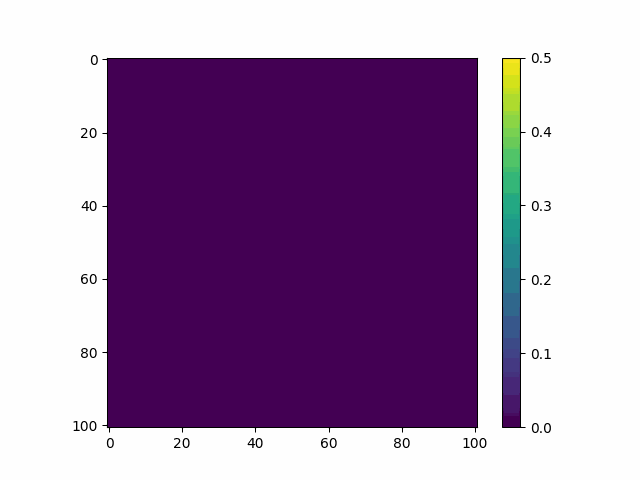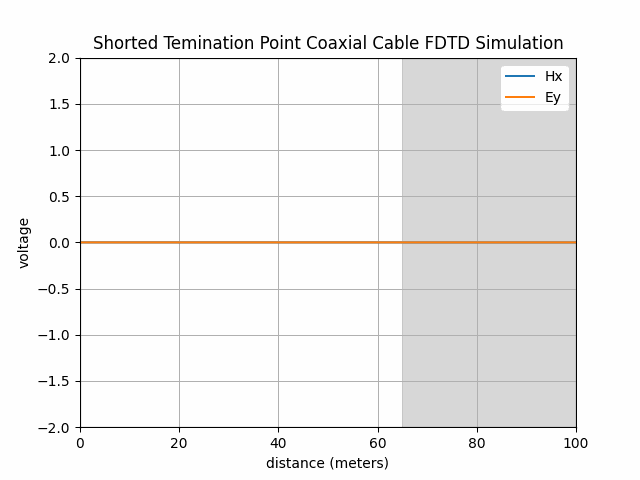FDTD Simulation
I developed an FDTD solver for EM waves as a research intern at the Biopelectrics & Electrophysics (BEEP) Lab at Purdue. I wrote the solver in Python and I'm currently re-writting it in Rust so that it can be implemented into an electroporation modeling software at BEEP.

2D E&M FDTD Simulaton Developed in Python
Co-Axial Cable Experiment

Before developing a 2D simulation, the 1D model was verified with an experiment. A 100 foot long coaxial cable was used as a transmission line for the schematic above. An ESP 32 was programmed to produce a square wave at its maximum clock speed, resulting in a 80 ns width pulse. The pulse resulting waveform was not square because the pulse width was near the I/O pin rise time. Since the pulse width was shorter than the travel time of the wave across the transmission line, a distinct incident and reflected pulse was captured in figures 7 and 8. When the termination is open, an identical wave is ideally reflected back. When the termination is closed, an inverted wave is ideally reflected back. These effects are shown in experimental figures 9 and 10.



The coaxial cable was simulated as a 1 dimensional medium so that the FDTD could be compared with the experimental results. Since FDTDs work with arbitrary input waveforms, the irregular shape of the microcontroller’s output waveform was captured with an oscilloscope and directly input to the simulation. The results of these simulations are shown in figures 9 and 10. Both the simulation and experiment found the gap in time between indecent and reflected waves to be about 250 ns. This is expected, since the transmission line permittivity used for the simulation was derived experimentally from the measured velocity factor. The pulse inside the line traveled at 81% the speed of light, corresponding to a relative permittivity of 1.5. This relative permittivity was the value used for the simulation which yielded a transmission time of 250 ns.